Kubuntu 11.10 for digital painting
The photo above is enough to communicate I spent more time than professionally acceptable just to find a system able to run my daily tools for my digital painting studio. 100% FOSS workflow on Linux system is still not ready for mass usage.
Intro
With the new year, new resolutions, cleaning things up to start the year correctly, it's hard to escape to the sweet temptation of upgrading my PC and my operating system as well.
My last working Operating System documented was a Linux Mint 11. I detailed its installation on this blog.
I was first tempted to just continue with Mint, and upgrade my OS to Linux Mint 12, but the new GNOME 3 made the Mint team fork their own thing and long story short: things are not as polished as when Linux Mint was based on GNOME 2 (windows colors, thumbnail of my files, panels, dual monitor ergonomics). In fact, GNOME 3 was released certainly a bit too early and feels more like a regression than an update. So, better to leave it.
So, I tried the new fork of GNOME 2 named "Mate", also delivered as an alternative on the Linux Mint 12 ISO. Mate worked pretty well but because not everything of Mint 11 was ported, it was also plenty of regression. And all GNOME 2 component were forked with new names for copyright and packaging reasons. Mate configurations files are also mixed up GNOME 2 configuration files, and new Mate specific path. And all also mixed up with GNOME 3 configuration. So things feels more like quickly patched together rather than a clean new start. And if you need to tweak the things to get thumbnails or customisation it is right now a big mess to know what files does what. Also, it's difficult to know if these community forks will have any future, so it's also difficult to get the energy to write scripts and build packages for them in this context.
That's why I decided to explore other Linux Distros and Desktop Environment: XFCE, KDE, LXDE, FluxBox, Awesome... But it took me a long time to find the one that could finally be the answer to what I was looking for.
My surprise was the discovery of KDE (XFCE was also really close to adoption). I started to test it on Fedora KDE Spin; then I installed an ArchLinux + KDE. But a problem with my Canon printer driver made me come back to an Ubuntu based distribution: Kubuntu 11.10 64bit, because it was the only place where the driver of my printer had a PPA to install it. Then I really started to like it my new operating system.
Kubuntu 11.10 screenshots :
This is not the default install screenshot of Kubuntu 11.10, but a version with my preferences set up.
Possibility to have a dark theme
My first good surprise was the possibility to get a dark theme quickly and easily. This is something I really like and allow me to work at night in better conditions. I also like to get a neutral and low luminosity value around my artworks. It helps my ability to color balance visually my artworks.
Thanks to "Get Hot New Stuff" built-in buttons on the System Settings, it's easy to find and install new online themes made by the community, and install them with one click.

A package manager with a visual interface
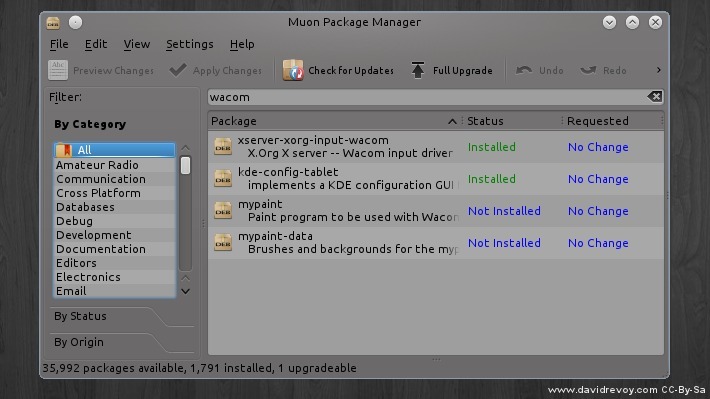
The package manager of KDE, muon, can install directly the packages you need without needing to enter command line in a terminal. It's very close to Synaptic of Linux Mint 11, but a bit easier to manage. It's not as convenient as the Linux Mint software center, but it's ok.
Tablet settings
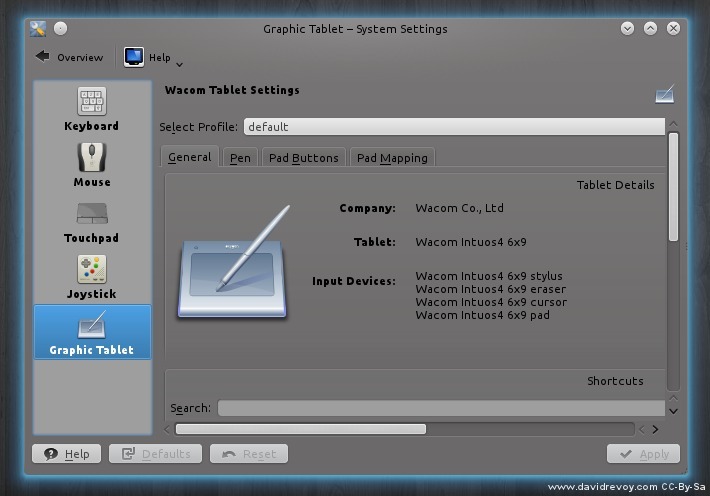
This is the best part: if you install the package kde-config-tablet and reboot, you'll get new options in the system settings to configure your graphic tablet, a real advantage for CG artists using Linux. It's also fully featured, as you'll see on the following screenshots:
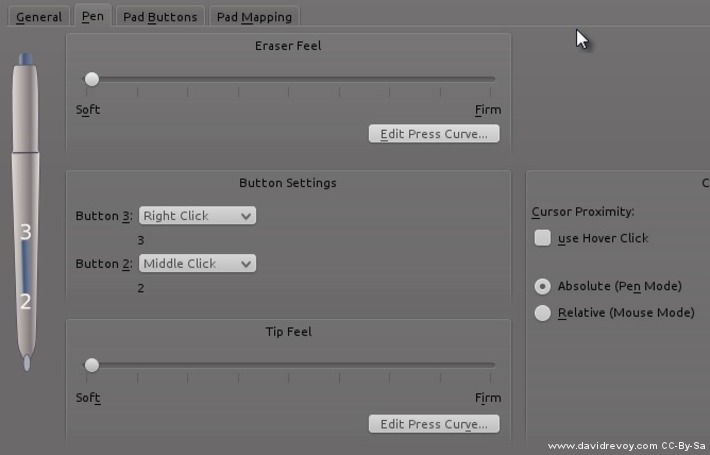
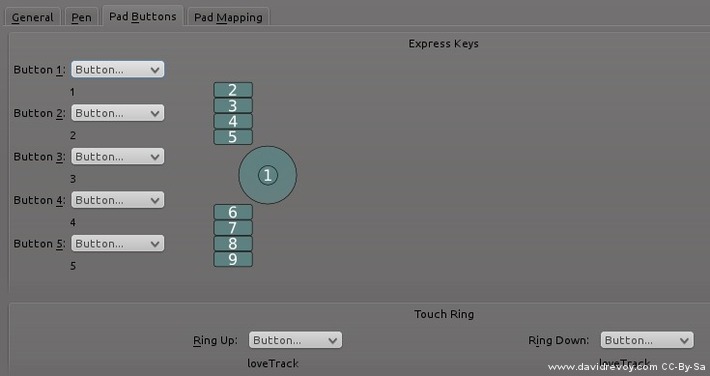
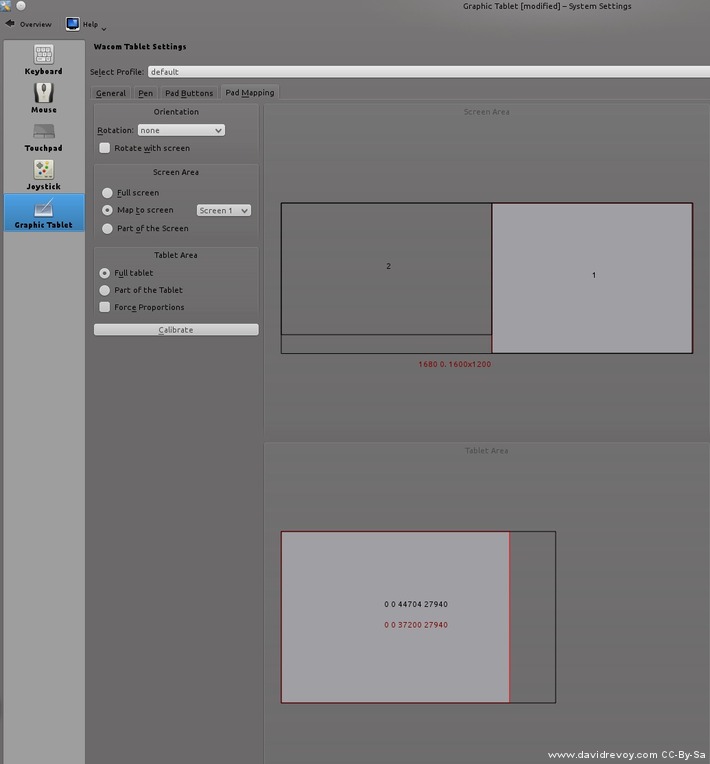
Thumbnails
Something also very cool on KDE, the file explorer, Dolphin can preview thumbnails for KRA, XCF and ORA files thanks to the preferences (menu General -> Previews -> Select Calligra Files). The thumbnails are also super large and don't have a white border all around them as in GNOME.
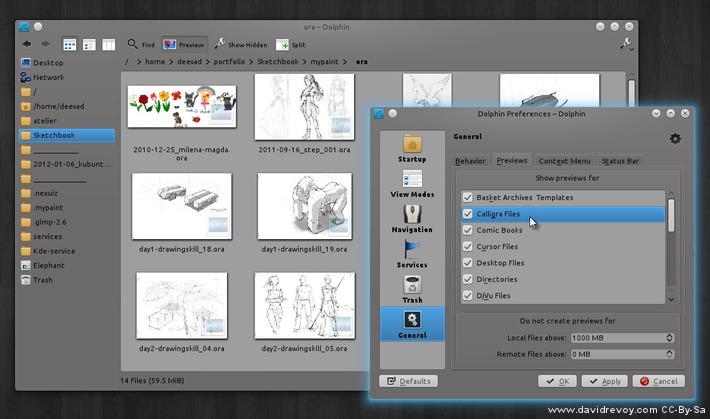
2D Painting applications :
Mypaint
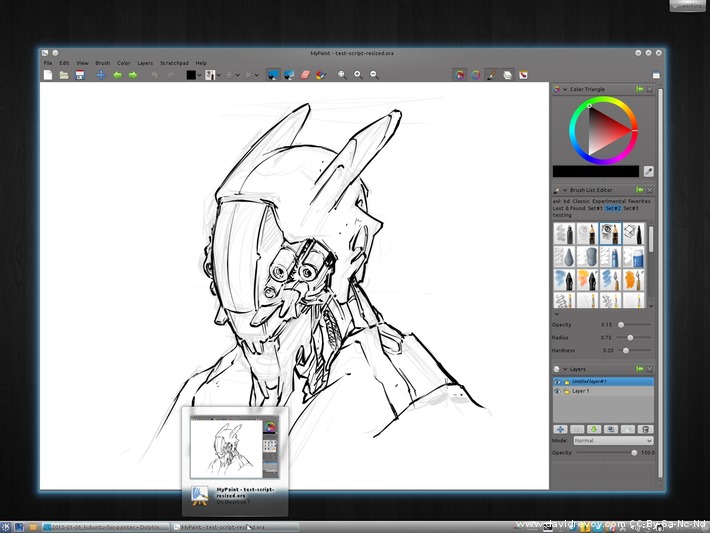
You can install the latest Mypaint via the PPA of the project :
sudo add-apt-repository ppa:achadwick/mypaint-testing
sudo apt-get update
sudo apt-get install mypaintKrita
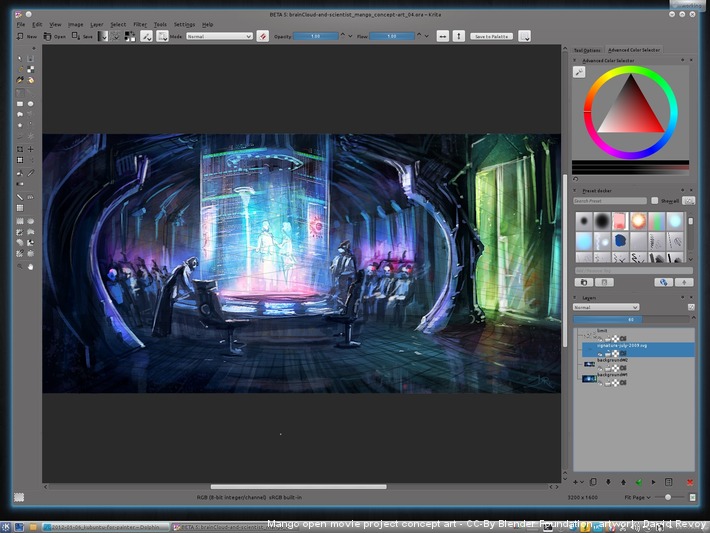
It will not sound like a big surprise if I write here that Krita will perfectly blend well in its native KDE environment. With the dark theme, it's perfect. The environment smooth also up problems related to the font of the interface and cursor stealing/focus issues.
You can install it via the PPA:
Gimp-Painter
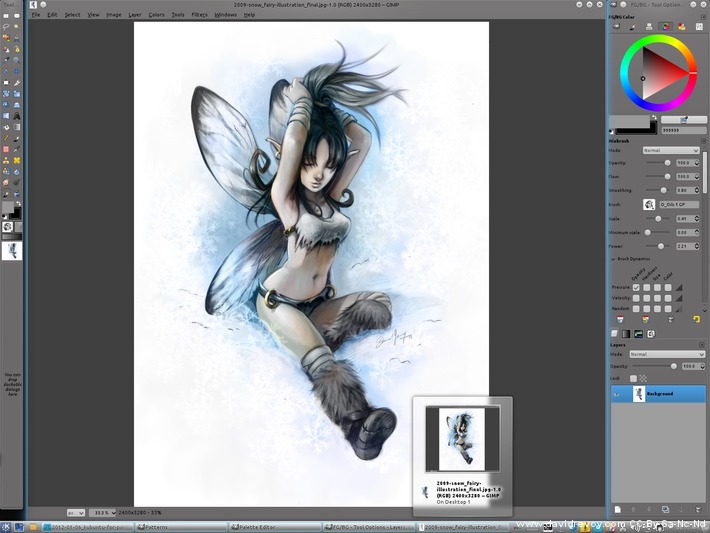
Unfortunately, the project Gimp-Painter 2.6.11 is abandoned and its features were not merged into official Gimp. So expect stability issues.
You can install it via the PPA:
Conclusion :
Many things work better for my use, and so I'm a happy new KDE desktop user. So I definitely like it and want to contribute to an even better place for my professional activities. The system is efficient and the default applications are very nice. Many user settings in the system preferences are much smarter than what I experienced with GNOME. The set of proposed options makes the whole also really flexible to customizations.
Another good point: KDE online presence has many things centralized and you don't need a lot of login/passwords to interact with the project. The KDE forum and the bug reporting tool are the same platform for all your KDE applications and they all use the same login/password. It is really convenient.
Next time I'll probably try to get away from Ubuntu completely. I'm annoyed by all the things that continuously break release after release. Their 6 months release scheme also makes the distribution quickly outdated, and it's hard to renew twice a year all my effort to adapt my workflow. Here is the list of the next one I want to evaluate: Chakra, Linux Mint Debian Edition or retry an Arch Linux with KDE.
Have happy painting !
I hope this article will help you to save time tweaking your computer, and so, get more time for drawing and painting! 💜
Footpage notes :
Building Krita-Dev version :
Krita-dev will install without any problem with a script made by Kubuntiac ; download the script of Kubuntiac : http://forum.kde.org/viewtopic.php?f=139&t=92880 , and follow the instructions.
Gimp-painter homemade patch
Gimp-painter from Mizuno PPA and all 2.6 now is broken because of a bug (ghost lines everywhere, it prevents painting using it). It also became more and more laggy with the newer Xorg version.
I patched and packaged a Gimp-painter for a better 11.10 compatibility. I self host the archive here: http://david.revoy.free.fr/forums/support/gimp-2.6.11-patched-src.tar.gz
Usage:
Extract it to the directory of your choice, then go with a terminal in the directory and paste this :
sudo apt-get build-dep gimp ./configure --prefix=/opt/gimp-painter --disable-default-binary make sudo make install
After that, your new Gimp-Painter installed should be able to be launched from /opt/gimp-painter/bin/gimp-2.6 , you can of course create a laucher or a sym link to /usr/bin/gimp for convenience.

